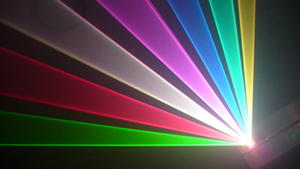
Extract from an appropriate paper I dug up in the library today:
Based on the above analysis, because of the sub- stantial gain difference between two lasing wavelengths, to optimize high efficiency sum-frequency mixing, the loss values of each respective wavelength at the output coupler should be set to approximately balance the gain matching. Here, we mainly depend on increasing transmission loss of 1064nm in the cavity to optimize the gain matching by designing and coating the highly excellent optical thin film. To reduce the design difficulty, the left facet of Nd:YVO4 was coated with 1064/1342 nm high reflection (HR) coatings as were all reflective mirrors: The concave surface of the output mirror was coated with 1342nm HR, and 1064nm partly transmission. Practically, it is very difficult to achieve the exact transmission values of the output mirrors for wavelength 1064 nm because of experiment errors. After several experiments, eventually, using the output mirror with the optimum transmission value of 1% for 1064 nm, the maximum yellow laser at 593.5 nm output power was achieved. The final experiment result is given below.
Hope that helps,
Dan
- There is no such word as "can't" -
- 60% of the time it works every time -






 Reply With Quote
Reply With Quote


 buffo
buffo

